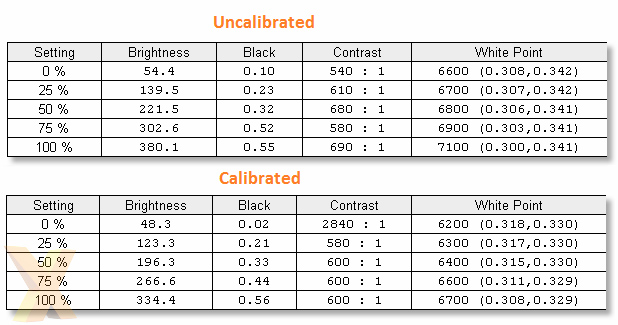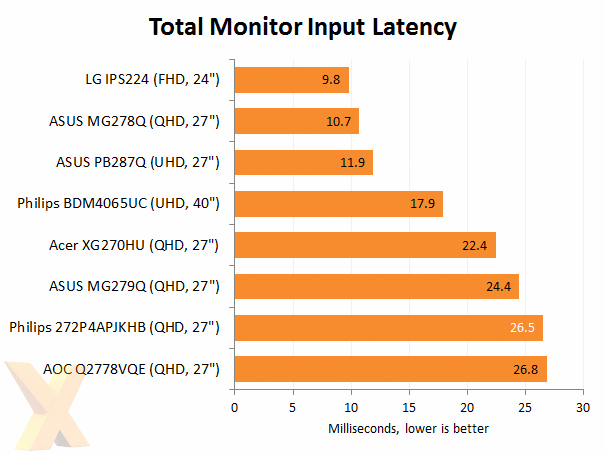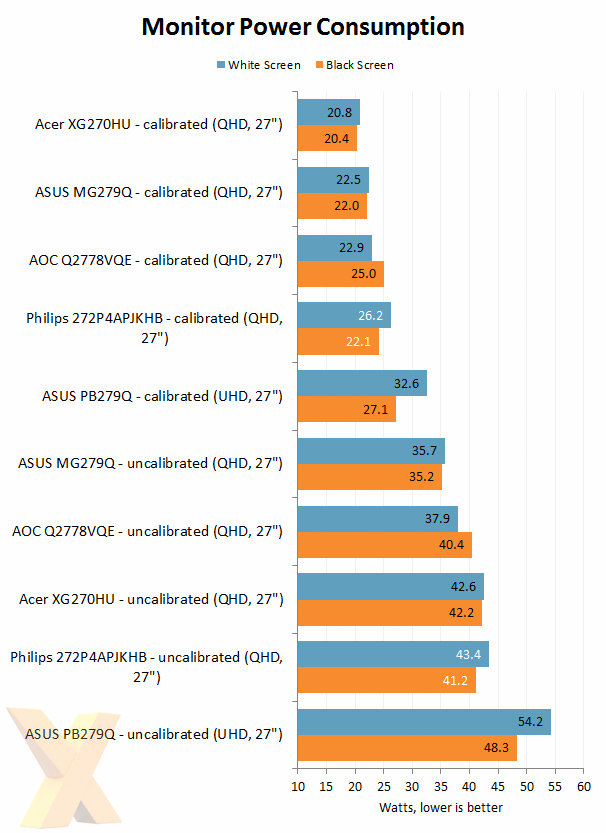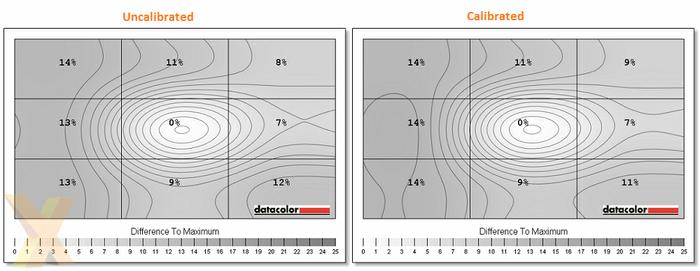Performance - Part II
Brightness and contrast
The Philips 272P4APJKHB meets its brightness specification but falls short of the 1000:1 typical contrast ratio that is promised in the specification. We also found the white point to be 100K and 600K off the ideal 6500K level depending on brightness levels and whether the monitor had been calibrated or not.

Brightness uniformity was fairly average for an IPS panel with up to 14 per cent fluctuations compared to the centre-point which is the brightest. We expected a little better on the uniformity front, both in brightness and colour terms, from a professional-grade display.
Input latency
The total input latency matched other low-cost, general purpose 27in QHD IPS monitors like the AOC Q2778WQE and ASUS MG279Q. This panel is still fast enough for smooth gaming but latency-sensitive gamers may notice more ghosting and lag than TN offerings like the Asus MG278Q.

Power consumption
Power consumption is typical of a monitor this size and resolution, which is approximately 45W at the factory default 85 per cent brightness and around 25W when calibrated to 120-nits, which was 24 per cent brightness in the OSD.











